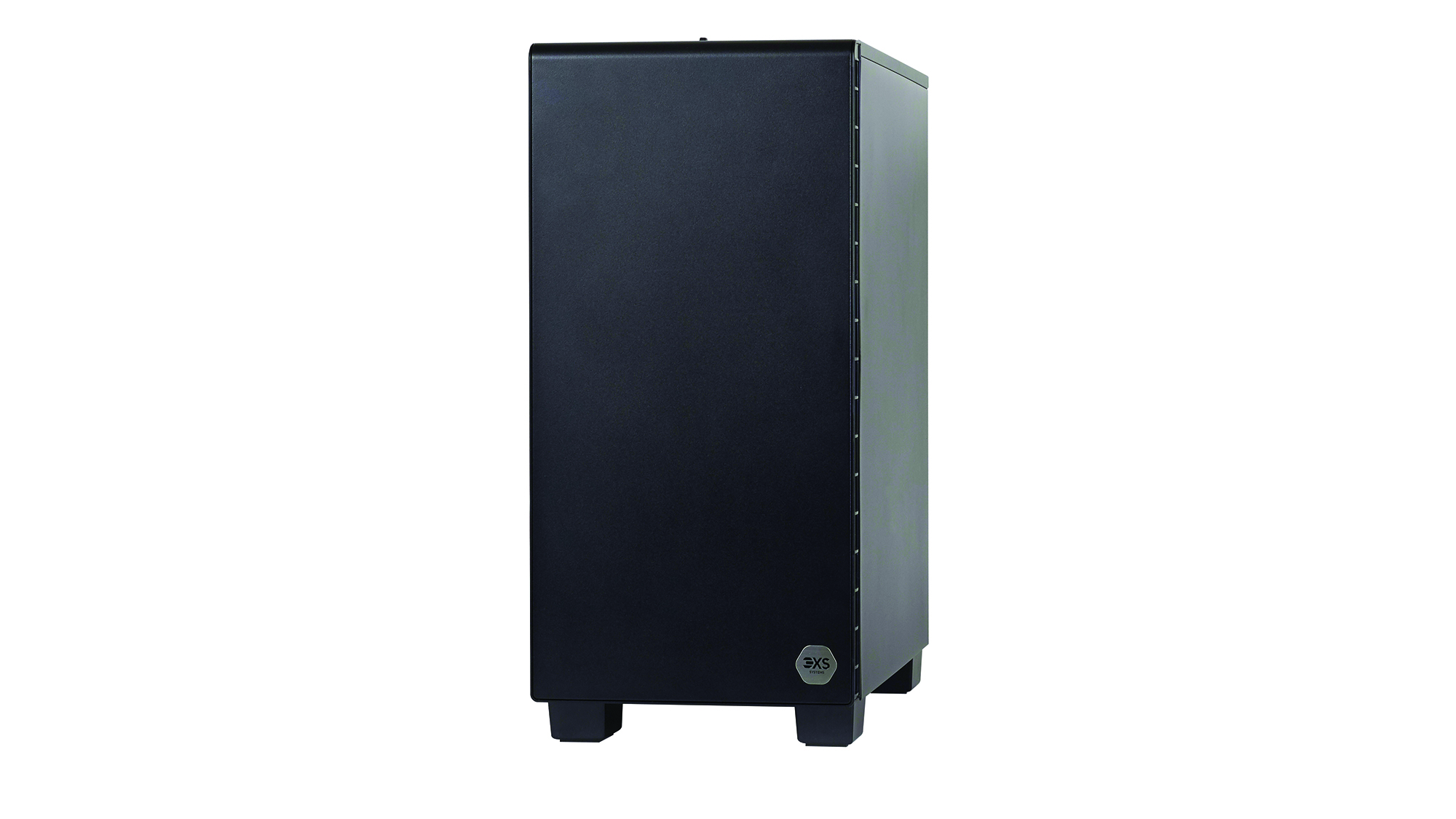Scan 3XS VI4000 Viz review
A well balanced workstation that’s great for the price


This system’s biggest strength is its modelling, with very good Maxon Cinebench 15 OpenGL and SPECviewperf 12.1 scores. The particularly impressive SolidWorks, Catia and Siemens NX results make this workstation highly suited to product and engineering design.
-
+
Good performance for the price; Excellent modelling capabilities
-
-
No USB 3.1 Gen 2; Slow HDD

Scan recently scored our top accolade for one of its more expensive models, and while it can't repeat that success with its lower-priced entry it epitomises the specification you would expect for around 2,500 inc VAT. Naturally, at this price, Scan opts for the more consumer-oriented Intel Core i7, but still includes the pinnacle of the recently released eighth generation, the 8700K.
Scan has been reasonably aggressive with the clock of its 8700K, although not as much as some rivals. This six-core processor has been set to 4.8GHz, giving a welcome boost over the 3.7GHz nominal rating. The processor is partnered with 32GB of 3,000MHz DDR4 SDRAM, supplied as two DIMMs and leaving two memory slots free for upgrades.
Graphics is standard for a 3D-oriented mid-range workstation, coming in the shape of Nvidia's Quadro P4000. With 1,792 CUDA cores and 8GB of GDDR5 memory offering 243GB/sec bandwidth, there's plenty of modelling acceleration power on offer.
Scan also opts for the usual combination of SSD and hard drive, with a 512GB Samsung 960 Pro NVMe M.2 unit partnered by a 2TB Seagate Barracuda 7200.14 SATA drive. The SSD is extremely nippy, offering 3.2GB/sec reading and 2GB/sec writing, but the hard disk is a slower performer, with just 186MB/sec reading and writing.
The VI4000 performs as expected. The overall score of 278 in the IT Pro benchmarks isn't as fast as more expensively-outfitted models, but still quick compared to most PCs. Likewise, the Maxon Cinebench 15 rendering score of 1,559 is excellent on a grand scale but low amongst the competition, as is the Blender render duration of 2,236 seconds. Adobe Media Encoder scores are on par with other systems using the 8700K processor.
This system's biggest strength is its modelling, with very good Maxon Cinebench 15 OpenGL and SPECviewperf 12.1 scores. The particularly impressive SolidWorks, Catia and Siemens NX results make this workstation highly suited to product and engineering design.
Overall, the Scan 3XS VI4000 Viz is a competent system for the money. It holds no major surprises, but the only weakness is the lack of USB 3.1 Gen 2 on the motherboard. Other than that, this is a solidly designed and balanced workstation.
Verdict
This system’s biggest strength is its modelling, with very good Maxon Cinebench 15 OpenGL and SPECviewperf 12.1 scores. The particularly impressive SolidWorks, Catia and Siemens NX results make this workstation highly suited to product and engineering design.
Get the ITPro daily newsletter
Sign up today and you will receive a free copy of our Future Focus 2025 report - the leading guidance on AI, cybersecurity and other IT challenges as per 700+ senior executives
Dr James Morris has worked as a technology journalist for over 25 years, including spending nine years on the staff of market-leading computer magazine PC Pro, the last five of which were as the publication’s editor. He specialises in enterprise-grade software and hardware, with a particular focus on content creation. He launched a pioneering video channel for HEXUS.net in 2006 and ran the video reviews channel for TrustedReviews.com for four years. He also runs a successful online digital content and commercial video production company, t-zero communications Ltd.
Dr Morris is a prolific technology writer and contributes commercial content for major IT brands including AMD, BlackBerry, Dell, Cognizant, HP, and IBM. He published a book on artificial intelligence, Can Computers Create Art? in 2009. He is also an academic, and is currently Pathway Director of the MA, Interactive Journalism at City, University of London.
Previously, he was course leader for the BA in Web Media Production at Ravensbourne University. He has a PhD in Philosophy, Art and Social Thought from the European Graduate School in Switzerland, a Master's in Media Arts from the New School in New York, USA, and a Bachelor's in Social Anthropology from the London School of Economics.
Dr. Morris can be found on Twitter at @Cyberwest, or emailed at j@tzero.co.uk
-
 Cleo attack victim list grows as Hertz confirms customer data stolen – and security experts say it won't be the last
Cleo attack victim list grows as Hertz confirms customer data stolen – and security experts say it won't be the lastNews Hertz has confirmed it suffered a data breach as a result of the Cleo zero-day vulnerability in late 2024, with the car rental giant warning that customer data was stolen.
By Ross Kelly Published
-
 Women show more team spirit when it comes to cybersecurity, yet they're still missing out on opportunities
Women show more team spirit when it comes to cybersecurity, yet they're still missing out on opportunitiesNews While they're more likely to believe that responsibility should be shared, women are less likely to get the necessary training
By Emma Woollacott Published
-
 OpenAI wants developers using its new GPT-4.1 models – but how do they compare to Claude and Gemini on coding tasks?
OpenAI wants developers using its new GPT-4.1 models – but how do they compare to Claude and Gemini on coding tasks?News OpenAI says its GPT-4.1 model family offers sizable improvements for coding, but tests show competitors still outperform it in key areas.
By Ross Kelly Published